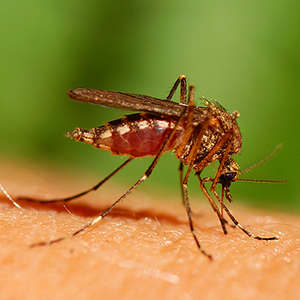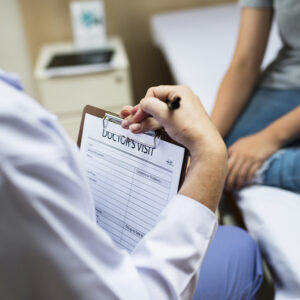Overview
The health district's Communicable Disease Epidemiology program offers limited technical consultation on head lice to school and child care professionals only. Call 509.324.1442.
What are head lice?
Human head lice (Pediculus humanus captis) are parasitic insects that infest the hair on people’s heads and necks, and rarely on their eyebrows and eyelashes. Head lice feed on human blood several times a day and live close to the human scalp. Head lice are not known to spread disease.
Who is at risk for getting head lice?
Head lice are found worldwide. In the United States, head lice infestations are seen most often among preschool children attending child care, elementary school children, and household members of infested children, including adults. It is estimated that in the U.S., 6 million to 12 million infestations occur each year among children 3 – 11 years of age.
Head lice cannot hop or fly. They move by crawling and can move very quickly. Head lice are spread by direct contact with the hair of an infested person. Anyone who has head-to-head contact for any length of time with someone who already has head lice is at risk for infestation. It is uncommon for head
lice to be spread by contact with clothing (such as hats, scarves, coats) or other personal items (such as combs, brushes, or towels) used by an infested person. Personal hygiene or cleanliness of the infested person’s home or school has nothing to do with getting head lice.
Where are head lice most commonly found?
Head lice and their eggs, called nits, are found almost exclusively on the scalp, particularly around and behind the ears and along the neckline at the back of a person’s head. Head lice and nits are rarely found on a person’s eyelashes or eyebrows. Head lice nits are cemented firmly to the hair shaft and can be difficult to remove, even after the nymphs hatch and empty casings remain.
What are the signs and symptoms of head lice infestation?
- Tickling feeling of something moving in the hair.
- Itching (after developing sensitivity to the saliva in head lice bites).
- Irritability and difficulty sleeping; head lice are most active at night.
- Sores on the head caused by scratching. These sores can sometimes become infected with bacteria found on the person’s skin (head lice themselves do not transmit disease).
Six Steps to Getting Rid of Head Lice
1. Examine
Examine everyone in the home for lice and nits.
First, look at a person’s hair, close to the scalp around the ears and across the back of the neck. Then carefully check the rest of the head.
Separate the hair strands carefully while looking. Nits are small, white to chocolate brown, oval-shaped eggs that are glued to the hair near the scalp. Nits are more easily seen than live lice.
2. Treat
Treat only those household members who have head lice.
Treat the heads of those you find infested with a lice treatment product. Lice treatment products are
available over-the-counter at drugstores, grocery stores, and some medical clinics. There are some
products that can only be prescribed by a medical provider. These products will not kill all the lice and
nits, but they are the best way to get the process started. Carefully follow the directions on the
package or those that your healthcare provider gives you. Using more treatment, reapplying it sooner
than recommended, or keeping it on the hair longer than directed will not make it work better or faster
and can increase the risk of toxic side effects in the person being treated.
3. Comb
Comb. Comb. Comb.
After treatment, comb the infested person’s hair with a lice-removal comb (called a nit comb) to remove lice and nits. Nit combs with long, round, metal teeth tend to be sturdier and more effective. Try to remove every nit and any lice you find. It’s OK if you can’t get them all on your first try. Just spend
time every day until you do get them all.
Combing the hair in the opposite direction of normal brushing will help you find more eggs. Nit picking can also be done by hand, using your fingernails or tweezers. Get rid of nits in the sink, toilet, or
garbage. Vacuum around the area where you were combing out nits. Both people should change their
clothes afterwards
Comb, using the nit comb daily for seven days, or until you no longer find any lice or eggs. This step takes the most time, energy, and patience. Combing is the most important step!
4. Clean
Clean your home using normal methods, such as washing clothes, towels, and bedding; vacuuming
floors and furniture; and soaking and cleaning combs and brushes in warm, soapy water. Do not use
fumigant sprays; they can be toxic if inhaled or absorbed through the skin. Head lice only survive less than o days if they fall off a person and cannot feed.
5. Repeat
Most products recommend a second treatment 7-10 days after the first. Follow the directions just as you
did for the first treatment. Afterwards, remove any eggs or lice that you might find.
Continue to check heads daily on everyone in your household until one week after the second treatment or one week after the last egg or louse is removed.
6. Notify
Notify everyone that may be affected, for example:
- School
- Church
- Childcare
- Friends
- Family
Head Lice Facts & Tips
Anyone with clean or dirty hair can get head lice.
It can be hard work to get rid of them.
Head-to-head contact is the way head lice are almost always spread.
Lice don’t jump or fly, but they are fast crawlers.
Pets do not carry or spread human lice.
Head lice do not spread disease.
Head lice need human blood to live. They’ll die within 48 hours if they can’t get it.
It takes head lice eggs (nits) about a week to hatch.
An itchy scalp is the most common symptom of having head lice and may continue for a while after you have successfully ended an infestation.
Lice treatment products help kill most of the lice. Even so, you’ll still need to physically remove the lice and nits, by combing or picking them out, to be sure they’ll no longer be a problem.
Don’t panic or retreat if you see live lice after treatment. Look for them and remove any lice you find until they are all gone. Continue to look until you haven’t seen any for seven days.
- Do not use a combination shampoo/conditioner, or
conditioner before using lice medicine. Do not rewash the hair for one to two days after the lice medicine is removed. - The use of mayonnaise, kerosene, Vaseline©, vinegar, and other home remedies are not proven to be effective and can be dangerous. Shaving the head is not necessary. If you do not want to use an overthe-counter treatment product, just comb out the nits with a good lice comb.
- Always follow the directions when using treatment products.
- Notify anyone who may be affected.
Head Lice Resources
Spokane Regional Health District offers practical information about head lice.
- Brochure: Head Lice – Examine, Treat and Comb
- Fact Sheet: Head Lice (PDF)
- Booklet: Guidelines for Controlling Head Lice (PDF)
- Coloring Book: No More Lice!
- Head Lice Information Line – (509) 323-2847

Animals & Insects Program
Preventing the spread of disease from animals to humans is a public health responsibility.

